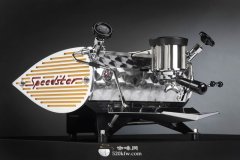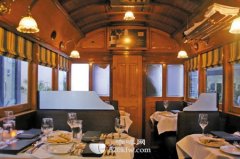French Cafe

In France, there are cafes of different styles and sizes, streets, tree-shaded squares, riparian cruise ships and balcony towers attached to buildings everywhere. The open-air cafe is a portrayal of the romantic life of the French, and colorful umbrellas have become a unique street scene decorating the Champs-Elysees. For coffee addicts, the coffee-scented streets on the left bank of the Paris River will always have the most memorable mellow air. Here, while sipping coffee, you can imagine the life of Picasso and Hemingway. The cafe is the spiritual food of the French and a typical symbol of French society and culture. The famous "LeProcoPe Cafe", no matter from the decoration or cultural relics arrangement still maintains the original pattern, exudes classical charm. Voltaire, Rousseau and Diderot, the thinkers of the 18th century European Enlightenment, as well as Robespierre, Danton and Mara, the three heroes of the Great Revolution, were all regulars here.
As a drink, coffee brings people enjoyment, health and exhilaration; as a culture, coffee nurtures the elegant, romantic, dignified and powerful qualities unique to European men.
When you come to the cafe, of course you come to drink coffee first.
Coffee, a magical drink, was endowed with magical functions as early as the Arab era. with the help of coffee, people thought about problems, dreamed of the world, and debated current politics. "it is the spiritual food for thinkers and chess masters"-by the way, Arabs hone their chess skills in coffee shops. Come to the cafe, people read, chat, listen to music, play chess, in the fragrant taste of coffee, let rational thinking insert romantic dream wings.
Europeans are also a people who love to argue, and coffee in their hands has become another extreme culture. Those who drink or gamble are not allowed to enter the door of the cafe, because people come to the cafe to promote intellectual growth. This enthusiasm for cafes expanded rapidly, and by 1730, there were nearly 4000 large and small cafes in Paris, the whirlwind center of the future democratic revolution. Looking at other places, such as London, Rome, Germany and Austria, it is too late to build new cafes, but more downtown restaurants, taverns and even high-end hotels are transformed directly into tall baroque cafes.
Later, cafes have more functions, including tea, cocoa, alcoholic drinks, all kinds of milk snacks and even dishes. In some cafes, people can stay overnight, often with bright lights until midnight, which is very lively.
In order to open up a wider public social life, high-end cafes at that time spared no expense to build halls that could hold dozens or even nearly a hundred coffee tables. For a long time, this was the earliest and only place for people from all walks of life to come and go freely in European cities. Among all kinds of people, there was a flood of inspiration from scholars in cafes and the quintessence of human civilization. From this small coffee table, it slowly spread all over the world.
So linguist Samuel Johnson believes that a cafe is not only a place to sell coffee, but also an idea, a way of life, a social model, a philosophy.
Important Notice :
前街咖啡 FrontStreet Coffee has moved to new addredd:
FrontStreet Coffee Address: 315,Donghua East Road,GuangZhou
Tel:020 38364473
- Prev

Coffee shop opening guide
Europe's first coffeehouse was established at Oxford University in England in 1650, and coffeehouses soon proliferated in London, becoming an open place for the exchange of ideas, somewhat similar to today's BBS. It can be said that before the development of modern printing industry, coffee shops played a role as media salons to some extent. In 1669, coffee was known to the French, and cafes had the greatest impact on France.
- Next

The "gas station" during the trip of the New Zealand Cafe
Coffee is a favorite drink for ordinary people in New Zealand. No matter in big city or small town, you can drink a cup in a coffee shop on the street corner for a few yuan. The taste of coffee is mellow, elegant and elegant, even inferior to some star-rated hotels in China. This "coffee culture", which originated from the folk, also nourishes New Zealand in a sense-the super "positive" aroma of coffee floats in the clean and beautiful.
Related
- What documents do you need to go through to open a coffee shop? coffee shop coffee shop certificate processing process
- How to purchase Coffee beans in small Cafe how to choose a suitable supplier for domestic Coffee supply Company
- How to drink Starbucks Fragrance White Coffee? how to make Australian White Coffee? what Italian coffee beans are recommended?
- The Story of Flora Coffee: the name of Flora Coffee Bean and the implication of the Flowers on Florna Coffee
- How much does a cup of coffee cost? How much is the profit of a cup of coffee? What is the profit of the coffee shop in a year?
- Yunnan small Coffee, known as "fragrant Coffee", introduces the characteristics of Alpine Arabica Coffee producing areas in Yunnan, China
- 2023 latest Starbucks full menu price list how much is a cup of Starbucks coffee what is better to drink the most popular hot and cold drinks recommended
- Starbucks different kinds of Coffee Price list Starbucks menu 2023 Top Ten Best drinks in Starbucks
- Starbucks Spring praise Comprehensive matching Coffee Bean theme Story Packaging implication and taste description
- The cost of a cup of coffee latte American coffee cost price and selling price

